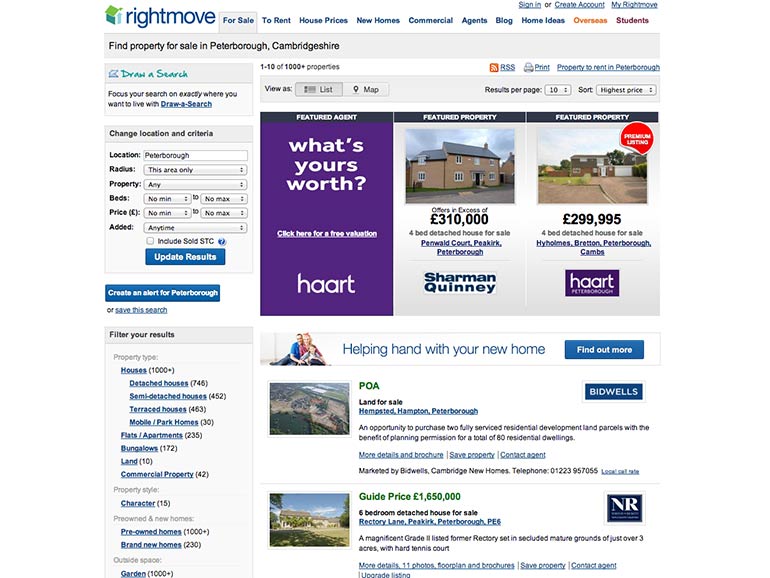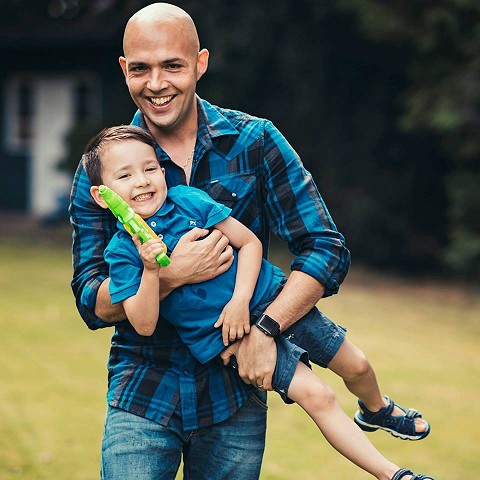Competitor Benchmarking – Ready Made Testing Prototypes

A large part of the modern design process involves validating design decisions with members of your target audience (if you’re doing it right). Sometimes we able to do this simply and cheaply on paper prototypes where we are navigating from one printed sheet to another. Other times, we need hi-fi prototypes on working HTML documents that gives the user a real sense of navigating an online experience. This is often expensive and time consuming on development teams which makes the process of quickly validating decisions and assumptions almost impossible. Validating those pivotal design decisions, we need to understand which method is most suitable to the cause. Time, effort and financial cost the main resources to consider.
Not so long ago, I was part of a team assigned to deliver a large scale property website in the UK. At that time, there was one large market leader (“Right Move”:http://www.rightmove.co.uk/) with another fast approaching due to huge investments (“Zoopla”:http://www.zoopla.co.uk/). Right Move had been first to market and was established as the first name on both buyers & sellers minds when searching for UK property online. Zoopla, who was late to market, was investing heavily in advertising but also buying up smaller property websites in order to gain a larger market slice. The two products were very similar on first view, but once you start getting deep into a search you started to notice some very obvious differences. A search for a particular property is a very user defined process, with so much property for sale and rent the user simply will not put up with scrolling through pages and pages of non-related search results. Right Move took the design decision to ask for as little information upfront as possible, thus making the process seem effortless to the user. All they asked on the home page was for the user to enter the area name and to select either ‘for sale’ or ‘for rent’. Very much akin to the Google search field. Although, once the user had entered this information another page appeared before any results had been shown. Now the user was asked to refine their search even further before reaching any results. Zoopla on the other-hand took an altogether different approach. Within the first page, you asked not only where you would like to search and whether you are looking for ‘sales’ or ‘rents’ but also the price range, bedrooms and property type. Once you hit the big ‘search’ button you are straight into the results. Why did they do it this way? What did they know that we didn’t?
Before any meaningful wireframes, user flows or visual designs had been created we drafted in 5 members of the public for some testing. No prototypes built, 0 cost on development time so far. We set a number of tests based on common user behaviours, basically tasks involving finding both property to rent and for sale within a certain price range and building requirement.
Although we found a lot of data from 1 full day’s worth of testing, an interesting fact was that we found users found the 2 step search approach used by Right Move was frustrating. In fact, users found Zoopla superior in many ways in regards to basic usability. Although completely justified and understandable why search had been split into 2 steps, users simply wanted the search results as soon as they hit the big blue ‘For Sale’ button. Sounds obvious when you think about it but only from benchmarking competitor websites do you find out these little golden nuggets of feedback.
Once we had completed the testing and I had a chance to debrief the team, we started to develop the basic wireframes I had previously created based on the knowledge we had picked up. Therefore once we started to look at validating these wireframes, we had already gained a vast amount of knowledge from the 2 leading competitors in the market, at minimal cost and 0 development time spent.
